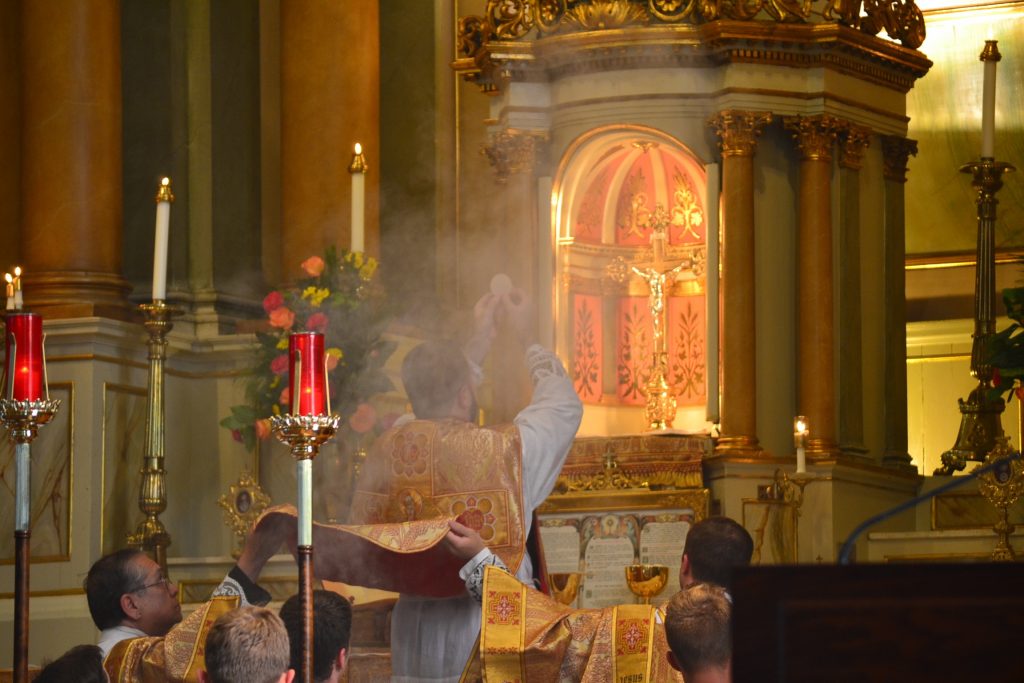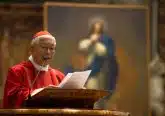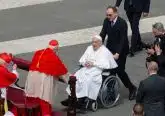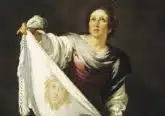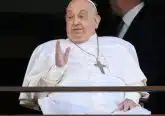Vatican sends extraordinary form Mass survey to world’s bishops
CNA Staff, Apr 27, 2020 / 12:01 pm MT (CNA).- The Vatican’s doctrinal congregation has asked the world’s bishops to report on how a landmark papal document acknowledging the right of all priests to say Mass using the Roman Missal of 1962 is being applied in their dioceses.
Cardinal Luis Ladaria, prefect of the Congregation for the Doctrine of the Faith (CDF), wrote to the presidents of bishops’ conferences in a March 7 letter, asking them to distribute a nine-point questionnaire to bishops about the 2007 apostolic letter Summorum pontificum.
The questionnaire was distributed to U.S. bishops April 27, a U.S. bishops’ conference spokesperson told CNA.
A spokesperson for the Bishops’ Conference of England and Wales confirmed April 27 that the conference had received the questionnaire and was preparing to distribute it to bishops.
In a 2007 letter to the world’s bishops, Pope Benedict XVI explained that Summorum pontificum enabled priests to offer Mass according to the 1962 Missal as a “Forma extraordinaria,” or extraordinary form, of the Roman Rite. The Missal published by Paul VI would remain the “Forma ordinaria,” or ordinary form, of the Rite, he said.
The CDF survey sent this year includes questions such as “In your opinion, are there positive or negative aspects of the use of the extraordinary form?” and “How has the motu proprio Summorum pontificum had an influence on the life of seminaries (the seminary of the diocese) and other formation houses?”
The questionnaire also asks whether the extraordinary form responds “to a true pastoral need” or is “promoted by a single priest.”
Bishops are asked to say whether they personally use the 1962 Missal and what advice they would offer about the extraordinary form.
The document also asked whether “in your diocese, the ordinary form has adopted elements of the extraordinary form?”
In his cover letter, which was first published by the website Rorate Caeli along with the survey, Cardinal Ladaria wrote: “Thirteen years after the publication of the motu proprio Summorum Pontificum issued by Pope Benedict XVI, His Holiness Pope Francis wishes to be informed about the current application of the aforementioned document.”
Ladaria asked bishops to send their responses by July 31, 2020.
The survey is not the Holy See’s first solicitation for feedback about the extraordinary form.
In his 2007 letter, Benedict XVI asked bishops “to send to the Holy See an account of your experiences, three years after this motu proprio has taken effect,” in 2010.
The Pontifical Commission Ecclesia Dei subsequently issued the 2011 instruction Universae ecclesiae, clarifying aspects of Summorum Pontificum.
Joseph Shaw, chairman of the Latin Mass Society of England and Wales, told CNA that in his view, the survey results will speak to a positive place for the extraordinary form in the life of the Church.
In a statement, Shaw said: “Assuming the CDF receives reasonably complete responses, comparing reports written in 2010 and in 2020 will show not only a steady growth in the number of celebrations, but an increasing and serene integration of the EF [extraordinary form] into the life of the Church, something attributable in large part to the attitude of the bishops themselves.”
“What the older generation of more hostile bishops believed is that with some discouragement priests and people would lose interest in it, but this has not happened,” he added.
“On the contrary, their successors are almost always more open-minded, and as time goes on it becomes clearer to younger priests and laity how the old arguments against the EF were often based on flawed scholarship and theological misunderstandings, and that as Pope Benedict noted, the ancient Latin liturgical tradition continues to have value for new generations,” Shaw said.
In March the CDF announced that it had issued two decrees giving new Eucharistic prefaces and provision for the optional celebration of more recently named saints in the extraordinary form.
The decree Quo magis provided seven new Eucharistic prefaces for the extraordinary form of the Mass, which may be used for particular occasions, such as votive Masses or the feast days of saints.
The second decree, Cum sanctissima, established a provision for the celebration of the third-class feasts of saints canonized after July 1960, whose memorials were established after the 1962 Roman missal.
